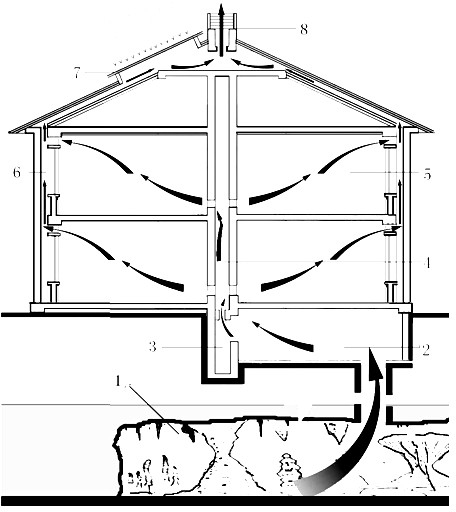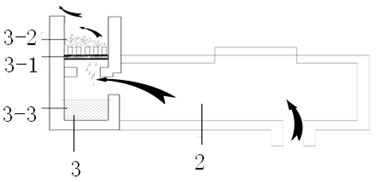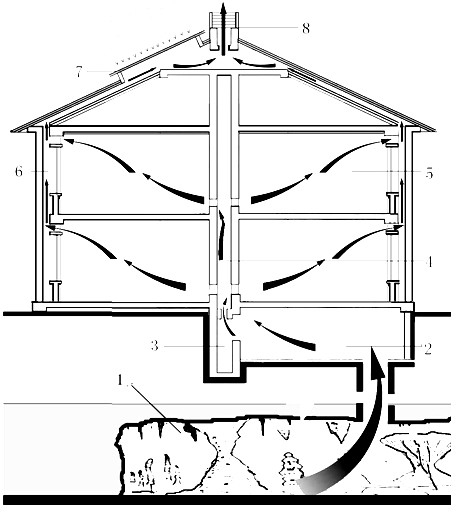Building air conditioning method device utilizing solution cavity climate
An air-conditioning and architectural technology, applied in air-conditioning systems, heating methods, space heating and ventilation, etc., can solve problems such as inability to thoroughly purify the air in the atmosphere, inability to purify air pollutants, and pollution of underground water sources from buried water pipes , achieving significant social and economic benefits, good use effects, and environmental protection effects
- Summary
- Abstract
- Description
- Claims
- Application Information
AI Technical Summary
Problems solved by technology
Method used
Image
Examples
Embodiment Construction
[0018] Embodiments of the present invention: a building air conditioning method for karst cave climate, building a building above the karst cave, first introducing the air in the karst cave into the air static pressure chamber, and then sending the air in the air static pressure chamber into the building through the air supply shaft In the air-conditioning room inside, the heated air box is used to extract the displaced air from the air-conditioning room through the exhaust duct of the outer wall, and the extracted air is discharged into the atmosphere through the exhaust port, so as to realize the impact of the cave climate on the building. adjust the air inside.
[0019] The structure of the building air-conditioning device in the cave climate is as follows: figure 1 As shown, including karst cave 1, building building 5 built above karst cave 1 is provided with air static plenum 2 at the bottom of building building 5, and the top of air static plenum 2 is provided with inspe...
PUM
 Login to View More
Login to View More Abstract
Description
Claims
Application Information
 Login to View More
Login to View More - R&D Engineer
- R&D Manager
- IP Professional
- Industry Leading Data Capabilities
- Powerful AI technology
- Patent DNA Extraction
Browse by: Latest US Patents, China's latest patents, Technical Efficacy Thesaurus, Application Domain, Technology Topic, Popular Technical Reports.
© 2024 PatSnap. All rights reserved.Legal|Privacy policy|Modern Slavery Act Transparency Statement|Sitemap|About US| Contact US: help@patsnap.com










